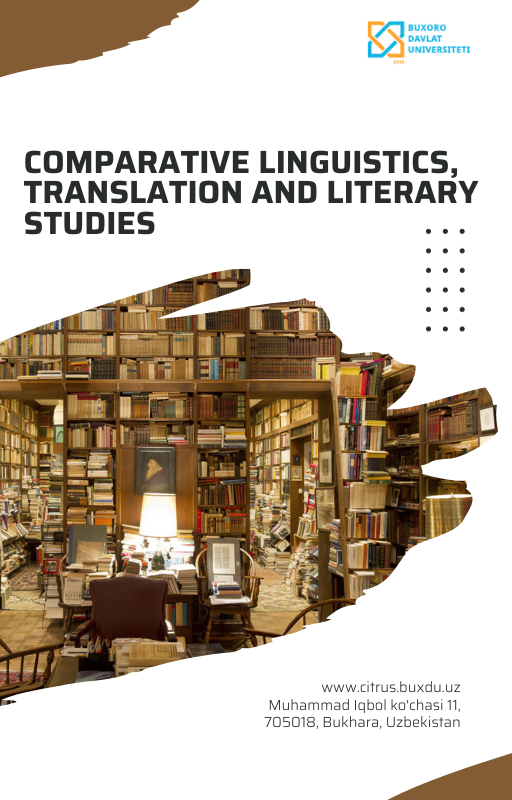Challenges in Sight Translation of Medical Terminology in Healthcare
DOI:
https://doi.org/10.70036/cltls.v2i1.1Keywords:
Sight Translation, Medical Terminology, Cognitive Load, Term Equivalency, Cultural AdaptationAbstract
General Background: Accurate translation of medical terminology is essential in multilingual healthcare settings. Specific Background: Sight translation, where medical terms are translated aloud in real-time, presents challenges due to cognitive, linguistic, and cultural complexities. Knowledge Gap: While cognitive load and term equivalency have been studied, their combined impact in real-world translation remains underexplored. Aims: This study investigates the cognitive load, term equivalency, and cultural adaptation strategies of healthcare translators. Results: Interviews with 15 translators identified cognitive load, term equivalency issues, and cultural adaptation as key challenges. Novelty: This research highlights the need for specialized training in managing these complexities. Implications: Findings suggest that healthcare translator training should focus on cognitive load, medical terminology, and cultural competence to improve translation accuracy and patient understanding.
Highlights:
- Cognitive load can lead to mental fatigue and translation inaccuracies.
- Lack of direct term equivalency often requires interpretive solutions.
- Cultural adaptation is crucial to ensure accurate and culturally sensitive communication.
References
Ali, W. D. A., Hamid, S. S., Sabah, M., Al-Hijaj, Z. M. H., Baker, S., & Atiyah, M. A. (2024). Critical knowledge gaps in Iraqi nurses’ understanding of antihypertensive drug risks. Academia Open, 9(1), 10–21070.
Ali, W. D. A., Hashoosh, D. R., Mishet, H. S., Sabri, S. H., & Atiyah, M. A. (2024). Assessing nurses’ knowledge on medication to reduce errors in Iraq. Academia Open, 9(2), 10–21070.
Angelelli, C. V. (2019). Healthcare interpreting. In The Routledge Handbook of Translation and Health (pp. 270–284). Routledge.
Atiyah, M. A., & Hasan, M. F. (2024). Assessment of pharmacy staff knowledge towards prevention of osteoporosis in adolescent girls. Age, 20(6), 30–39.
Braun, V., & Clarke, V. (2006). Using thematic analysis in psychology. Qualitative Research in Psychology, 3(2), 77–101.
Creswell, J. W., & Poth, C. N. (2018). Qualitative Inquiry and Research Design: Choosing Among Five Approaches (4th ed.). Sage Publications.
Flick, U. (2018). An Introduction to Qualitative Research (6th ed.). Sage Publications.
Gile, D. (2009). Basic Concepts and Models for Interpreter and Translator Training. John Benjamins Publishing.
Hasan, M. F., Hussein, W. F., Tiryag, A. M., Ali, I. J., & Shaker, Z. M. (2024). Nurses’ knowledge toward lower back pain: A cross-sectional study. Academia Open, 9(1), 10–21070.
Hasan, M. F., Khalaf, F. H., Mutashar, M. K., Mahdi, W. S., & Atiyah, M. A. (2025). Physiological adaptation to left ventricular enlargement. Indonesian Journal on Health Science and Medicine, 2(1), 10–21070.
Kvale, S., & Brinkmann, S. (2015). Interviews: Learning the Craft of Qualitative Research Interviewing (3rd ed.). Sage Publications.
Lee-Jahnke, H. (2012). Interdisciplinarity in medical translation. In H. Vandaele (Ed.), Methodology, Technology, and Innovation in Translation Process Research (pp. 141–156). John Benjamins Publishing.
Mikkelson, H., & Jourdenais, R. (2015). The Routledge Handbook of Interpreting. Routledge.
Mohammed Kadhim, M., Mahfoudh, F. H., & Maher, A. A. (2024). Morphology of medical pathological terms with the prefix (Cardio. International Journal of Language Learning and Applied Linguistics, 3(3), 21–24.
Muñoz Martín, R. (2014). Cognitive development in translation: From translation processes to the development of expertise. In W. P. Balling, M. Carl, & S. M. Jakobsen (Eds.), Eye Tracking and Translation Process Research (pp. 65–88). John Benjamins Publishing.
Mutashar, M. K. (2024). Navigating ethics in AI-driven translation for a human-centric future. Academia Open, 9(2), 10–21070.
Mutashar, M. K., Awad, K. J., & Atiyah, M. A. (2024). Hyperactivity disorders: An assessment of kindergarten teachers’ knowledge. Indonesian Journal on Health Science and Medicine, 1(2), 10–21070.
Patton, M. Q. (2015). Qualitative Research & Evaluation Methods: Integrating Theory and Practice (4th ed.). Sage Publications.
Pöchhacker, F. (2016). Introducing Interpreting Studies (2nd ed.). Routledge.
Riccardi, A. (2019). Interpretation and translation in healthcare: Bridging language and cultural gaps. In Healthcare Communication in Multicultural Contexts (pp. 25–41). Palgrave Macmillan.
Robinson, D. (2012). Becoming a Translator: An Introduction to the Theory and Practice of Translation (3rd ed.). Routledge.
Tiryag, A. M. (2024). Revitalizing hearts: The transformative impact of pacemaker therapy on cardiac conduction disorders. Academia Open, 9(1), 10–21070.
Valero-Garcés, C., & Martin, A. (2008). Crossing borders in community interpreting: Definitions and dilemmas. John Benjamins Publishing.
Downloads
Published
How to Cite
Issue
Section
Citation Check
License
Copyright (c) 2025 Mohammed Kadhim Mutashar, Ahmed Flayih Hassan, Muhannad Fakhri Bash Agha

This work is licensed under a Creative Commons Attribution 4.0 International License.
Copyright
Authors who publish with Comparative Linguistics Translation and Literary Studies agree to the following terms:
- Authors retain copyright and grant the journal right of first publication with the work simultaneously licensed under a Creative Commons Attribution 4.0 International License that allows others to share the work with an acknowledgment of the work's authorship and initial publication in this journal.
- Authors are able to enter into separate, additional contractual arrangements for the non-exclusive distribution of the journal's published version of the work (e.g., post it to an institutional repository or publish it in a book), with an acknowledgment of its initial publication in this journal.
- Authors are permitted and encouraged to post their work online (e.g., in institutional repositories or on their website) prior to and during the submission process, as it can lead to productive exchanges, as well as earlier and greater citation of published work.
License
This work is licensed under CC BY 4.0






